Lubang Island, a beautiful and serene island situated in the northwest of the Philippines, is an important habitat for a diverse range of bird species. This tropical paradise is home to a vast array of birds that flaunt their vibrant colors and enticing calls.
The lush forests, coral reefs, and other natural ecosystems of Lubang Island provide a perfect environment for these feathered creatures to thrive. The island’s unique location has made it an attractive destination for many bird watchers who want to experience the beauty of the island’s avian inhabitants.
In this article, we will explore Lubang’s amazing birdlife, their habitats, and the conservation measures taken to protect them.
1. Spotted Dove
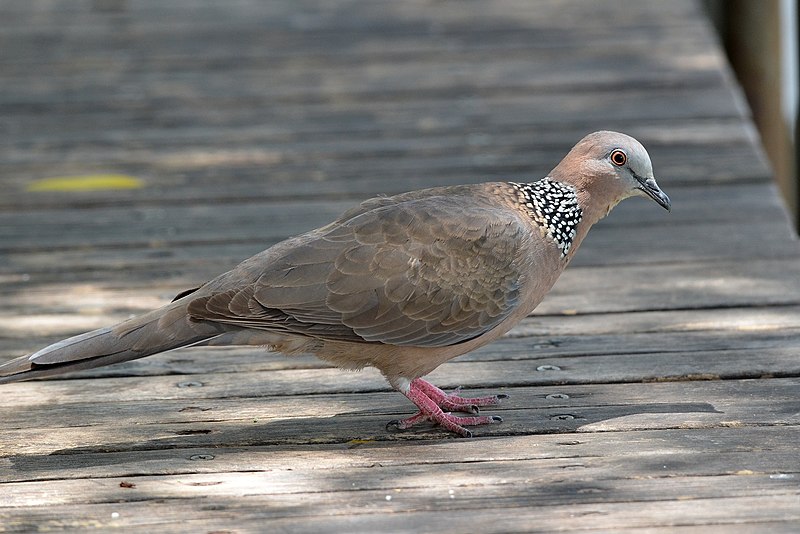
The Spotted Dove is a common species of pigeon found in the Indian subcontinent and Southeast Asia. It has an elegant, slender body with small head, long tail feathers and spotted wings.
Its coloring ranges from grey to brownish-grey on its upperparts with white underparts that are speckled black or dark grey. The male generally has more prominent spots than the female.
They feed mainly on seeds but will also consume insects when available during breeding season as well as berries, grains and fruits throughout their range.
These birds typically live in pairs or small groups near water sources such as ponds, rivers or streams where they can find food easily while staying safe from predators like cats and hawks.Scientific classification:
| Kingdom | Animalia |
| Phylum | Chordata |
| Class | Aves |
| Order | Columbiformes |
| Family | Columbidae |
| Genus | Spilopelia |
| Species | S. chinensis |
Also Featured In: Common Birds in India, Hawaii Big Island Birds You Should Know
2. Black-Chinned Fruit Dove
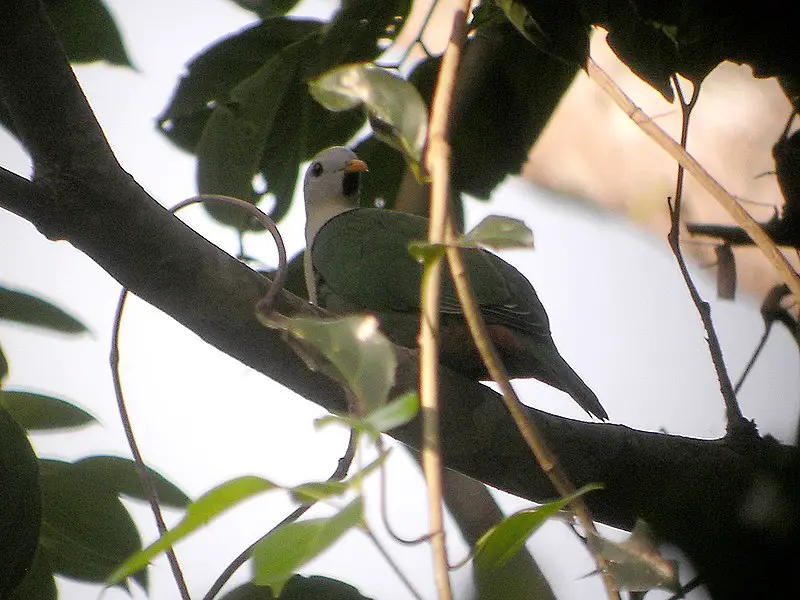
The Black-chinned Fruit Dove is a stunningly beautiful bird with its vibrant colors and unique features.
Males have green bellies, wings, and tails; whitish grey heads and necks with purple bases; red irises; yellow bills with small black patches underneath.
Females have green heads, necks, backs of the head to the tail feathers which are dark brown in color.
This species can grow up to 27 cm long making it medium sized for a dove species. They inhabit lowland forests from northern India throughout Southeast Asia as far north as Taiwan where they feed on fruits like figs along with some insects too.
These birds usually travel alone or in pairs during their migrations but flocks may also form when food sources become available at certain times of year.Scientific classification:
| Kingdom | Animalia |
| Phylum | Chordata |
| Class | Aves |
| Order | Columbiformes |
| Family | Columbidae |
| Genus | Ptilinopus |
| Species | P. leclancheri |
Also Featured In: Birds of the Philippines, Common Philippines Birds
3. Striated Heron
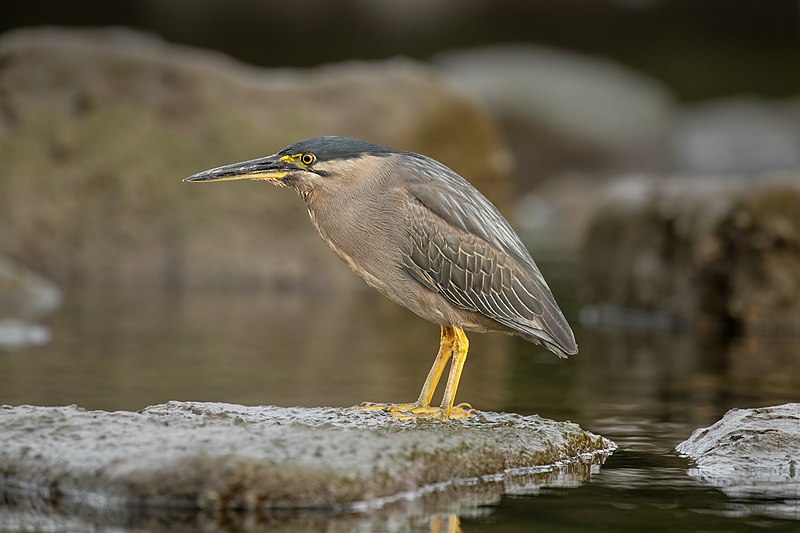
Striated herons are a small species of heron, measuring around 44cm tall. They can be found in wetland areas across the Old World tropics, from west Africa to Japan and Australia as well as South America and the Caribbean.
Striated herons have some interesting behavioral traits that make them unique; they’re mostly sedentary birds who tend to stay close to their breeding habitats throughout most of the year.
During breeding season these little green-backed herons become more active, often performing courtship dances in order to attract mates before nesting together on nearby trees or shrubs.Scientific classification:
| Kingdom | Animalia |
| Phylum | Chordata |
| Class | Aves |
| Order | Pelecaniformes |
| Family | Ardeidae |
| Genus | Butorides |
| Species | B. striata |
Also Featured In: Beautiful Malaysian birds, Rainforest Birds You Should Know
4. Black-Crowned Night Heron
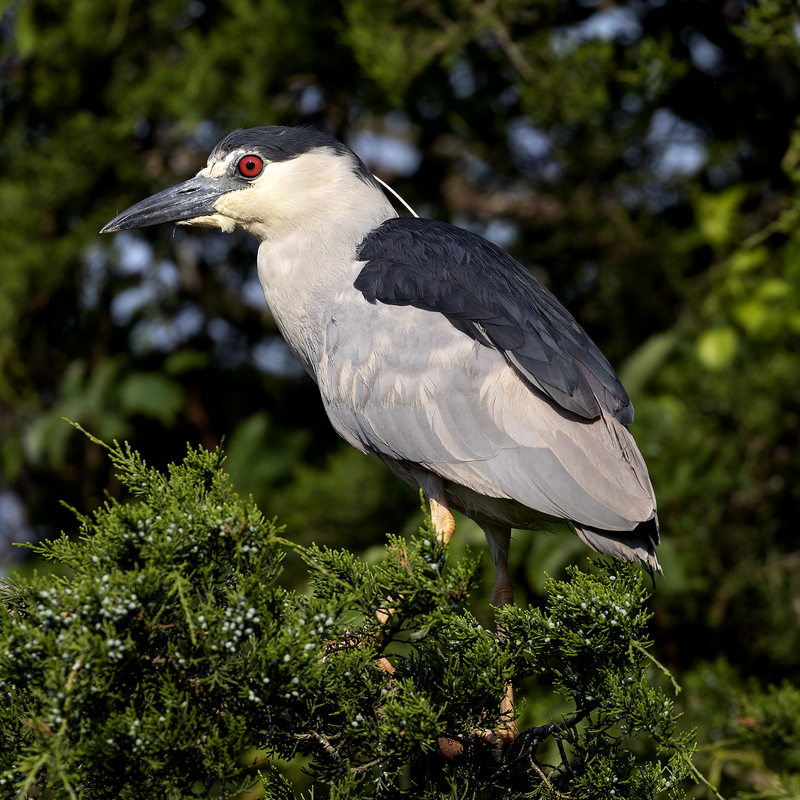
The Black-crowned night heron (Nycticorax nycticorax) is a medium-sized bird found in various parts of the world, including Europe, Asia and North and South America.
It has black crowns on its head with white feathers underneath. Its wings are greyish brown while its underparts are mostly white.
This species can be seen foraging near shallow water or along coastlines during dusk or dawn as it hunts small fish, amphibians and crustaceans.
They also feed on insects such as grasshoppers and beetles which they find in meadows close to freshwater bodies like lakes or ponds where they breed during springtime making nests using twigs lined with reeds and leaves near these waterside habitats.
In Australasia, this species hybridizes with the nankeen night heron that inhabits those areas instead; however both populations remain distinct from each other despite their overlap range regions.Scientific classification:
| Kingdom | Animalia |
| Phylum | Chordata |
| Class | Aves |
| Order | Pelecaniformes |
| Family | Ardeidae |
| Genus | Nycticorax |
| Species | N. nycticorax |
Also Featured In: Common Birds Found in Switzerland, Flight Birds You Should Know
5. Eurasian Whimbrel
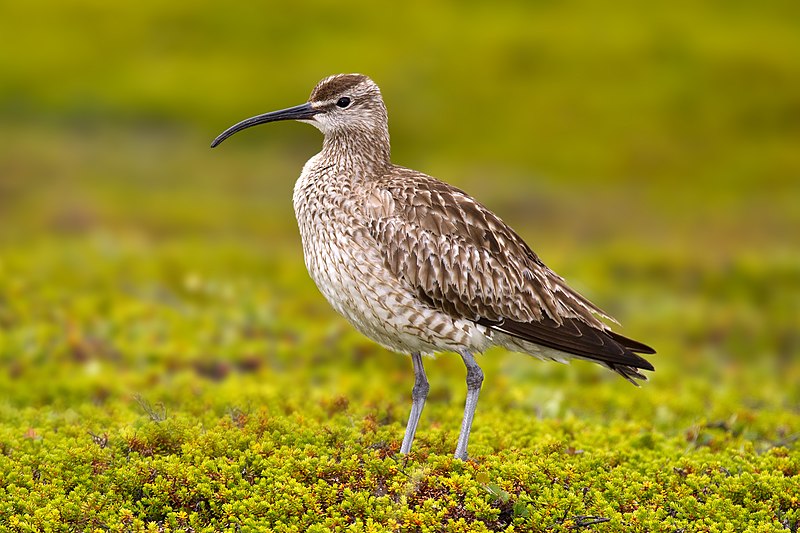
Eurasian Whimbrels are a species of wading bird commonly found in subarctic regions of Europe and Asia.
They have white rumps, long curved bills, brown wings and backs with light streaking on the lower breast.
These birds feed mainly on crustaceans, mollusks or worms they find while probing in the mud during low tide.
During breeding season they can be seen nesting near coastal areas or wetlands where food is plentiful.
This species has recently been split from Hudsonian whimbrels but some authorities still consider them to be one species due to their similarities which includes migration patterns as well as habitat preferences.
Eurasian whimbrels are an important part of many ecosystems because they help control insect populations by eating larvae before it can cause damage to crops or vegetation nearby.Scientific classification:
| Kingdom | Animalia |
| Phylum | Chordata |
| Class | Aves |
| Order | Charadriiformes |
| Family | Scolopacidae |
| Genus | Numenius |
| Species | N. phaeopus |
Also Featured In: Singapore Birds, Galapagos Birds You Should Know
6. Garganey
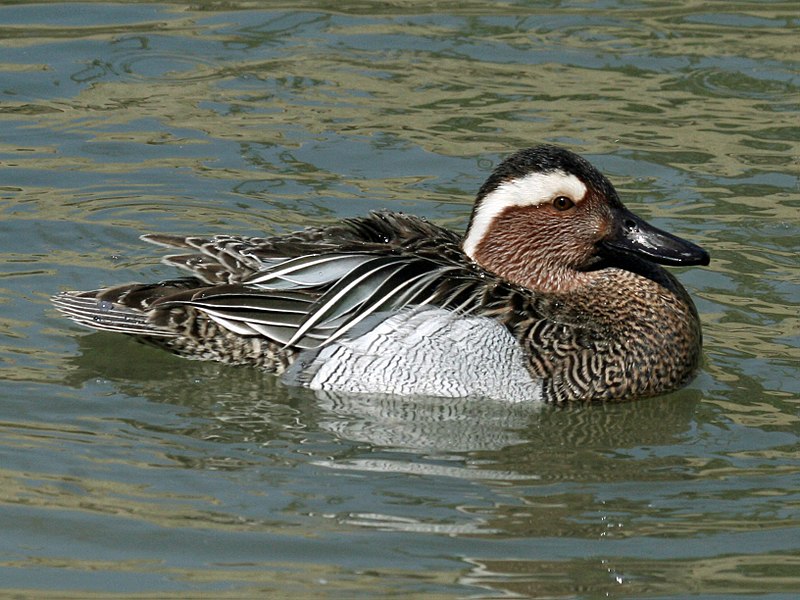
The Garganey is a small dabbling duck that breeds in much of Europe and across the Palearctic. During winter, it migrates to southern Africa, India (Santragachi), Bangladesh (in Sylhet district) and Australasia where large flocks can be seen.
It has an unmistakable appearance with its brownish head and grey body covered by white patches on both sides along with blue speculum feathers at the back of wings.
Its diet mostly consists of aquatic vegetation such as grasses, sedges or pondweeds which are usually collected from shallow waters like marshes or ponds while swimming.
The species is vulnerable due to loss of wetland habitats caused by drainage for agriculture purposes or urban development making them increasingly rarer throughout their range.Scientific classification:
| Kingdom | Animalia |
| Phylum | Chordata |
| Class | Aves |
| Order | Anseriformes |
| Family | Anatidae |
| Genus | Spatula |
| Species | S. querquedula |
Also Featured In: Kuwait Birds, Birds Found in Hungary
7. Red-Tailed Tropicbird
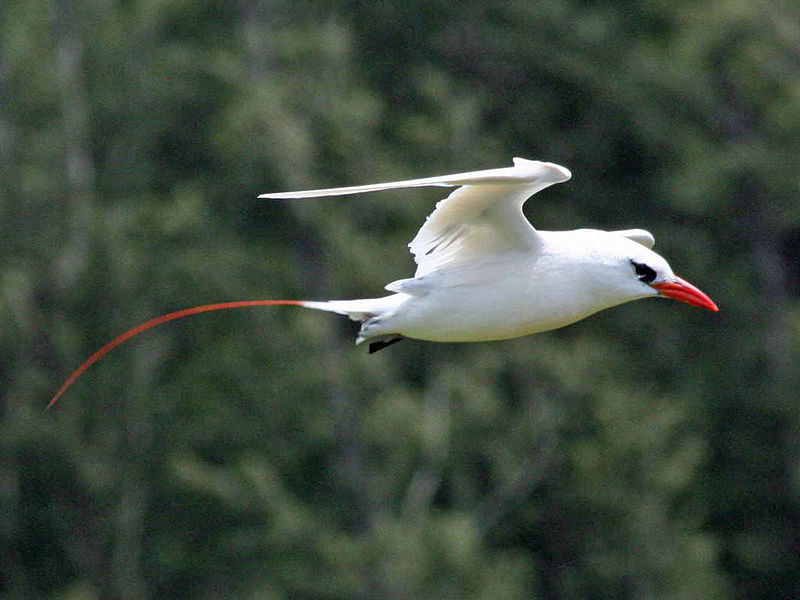
The Red-tailed Tropicbird is an exotic seabird found in tropical areas of the Indian and Pacific Oceans. It has a striking appearance, with mostly white feathers and a black mask covering its eyes.
Its bill is bright red, making it stand out against its pale plumage. Both males and females have similar looks to one another – unlike many other birds species where the male looks significantly different from that of the female.
Described by Pieter Boddaert in 1783, this impressive bird can be seen soaring through tropical skies looking for food either alone or within small flocks made up of several individuals at once.Scientific classification:
| Kingdom | Animalia |
| Phylum | Chordata |
| Class | Aves |
| Order | Phaethontiformes |
| Family | Phaethontidae |
| Genus | Phaethon |
| Species | P. rubricauda |
Also Featured In: Mauritius birds, Common Republic of Nauru Birds
8. Wedge-Tailed Shearwater
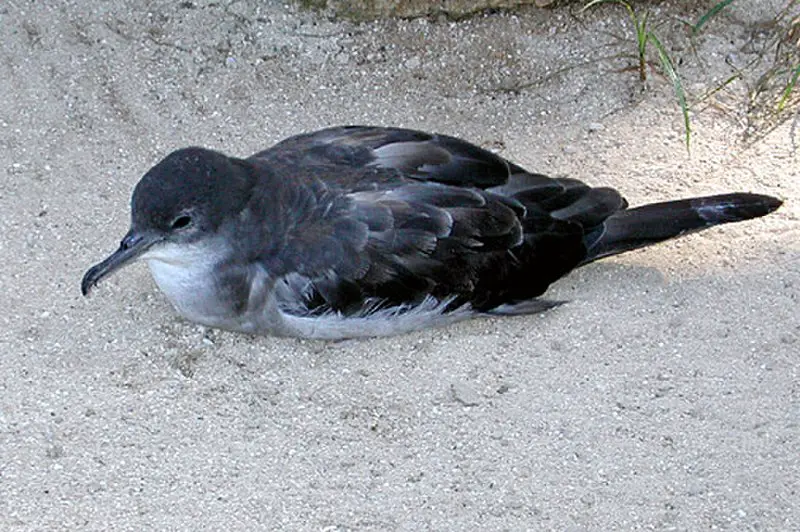
The wedge-tailed shearwater is a medium-large seabird found in the tropical Pacific and Indian Oceans. It is one of several species referred to as muttonbirds, along with the sooty and short-tailed shearwaters.
These birds have long wings that allow them to soar for extended periods over large bodies of water while searching for food such as fish, squid, crustaceans, cephalopods and other marine invertebrates.
During mating season they nest on islands or small sandy beaches where both parents take turns caring for their chicks until they fledge at around two months old.
Wedge-taileds are an important part of many island cultures who traditionally hunt these birds during certain times of year when populations peak due to migration patterns.Scientific classification:
| Kingdom | Animalia |
| Phylum | Chordata |
| Class | Aves |
| Order | Procellariiformes |
| Family | Procellariidae |
| Genus | Ardenna |
| Species | A. pacifica |
Also Featured In: Seychelles birds, Birds that Live in the Ocean
9. Nankeen Night Heron
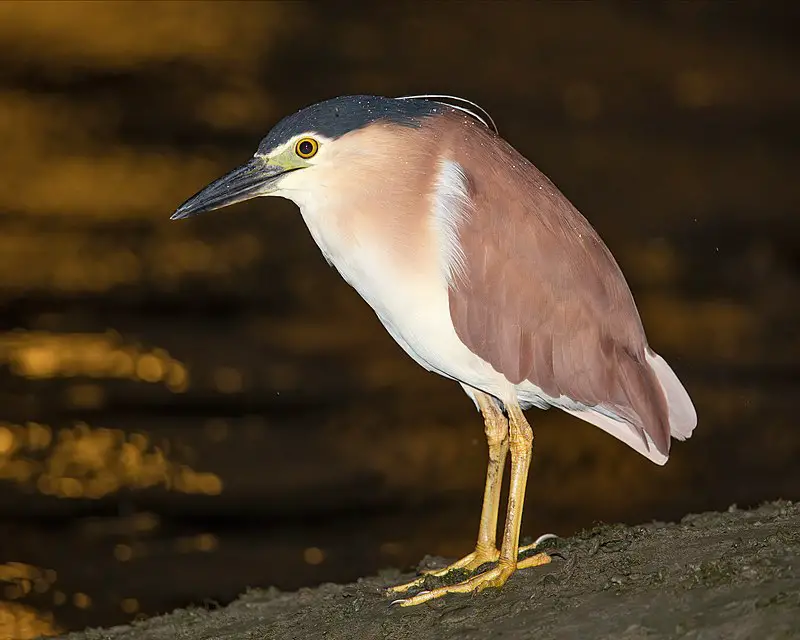
The Nankeen night heron is a beautiful bird with its distinct reddish-brown colour. It can be found in an impressive range of habitats, including forests, meadows, shores and swamps.
Primarily nocturnal by nature, these birds are most active during the dark hours of the day.
Measuring between 55 to 65 cm long they have broad wings which help them soar through the air gracefully at great speeds when hunting for food or migrating across continents.
Their diet primarily consists of small fish and other aquatic creatures that live in lakes or rivers near their homes.
For many people living near water sources like ponds or streams this species has become a familiar sight as it often comes out to feed on insects at dusk.Scientific classification:
| Kingdom | Animalia |
| Phylum | Chordata |
| Class | Aves |
| Order | Pelecaniformes |
| Family | Ardeidae |
| Genus | Nycticorax |
| Species | N. caledonicus |
Also Featured In: Herons Species, Birds that Live around Victoria
10. Japanese Night Heron
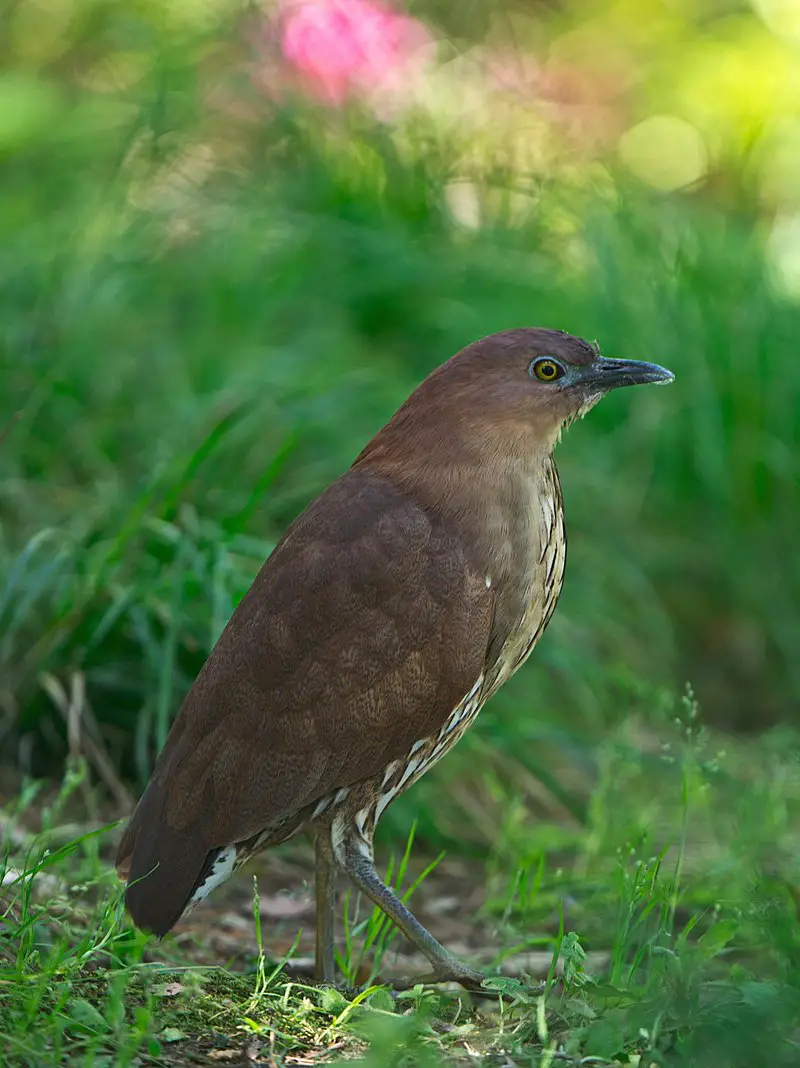
The Japanese night heron is a species of night heron that can be found in East Asia. It breeds mainly in Japan, and migrates to the Philippines and Indonesia during winter season.
During spring and summer, they are also seen in Korea or Russian Far East. This bird prefers dense forests with high humidity as its habitat for both breeding grounds and wintering sites.
Unfortunately, their population has been declining since 1970s due to deforestation activities which have destroyed their preferred habitats significantly.
Conservation efforts must be taken soon before this species becomes extinct from our planet earth.Scientific classification:
| Kingdom | Animalia |
| Phylum | Chordata |
| Class | Aves |
| Order | Pelecaniformes |
| Family | Ardeidae |
| Genus | Gorsachius |
| Species | G. goisagi |
Also Featured In: Samar Island Birds You Should Know,
11. Little Grebe
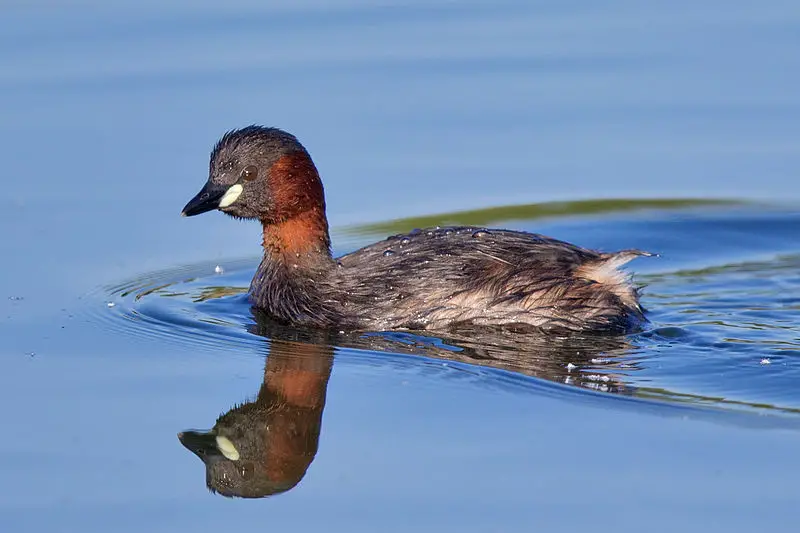
The little grebe, also known as dabchick, belongs to the grebe family and is a small water bird. It gets its genus name from the Ancient Greek words for ‘fast’ and ‘to sink under’.
The specific name ruficollis means ‘red-necked’ in Latin. With a length of 23 to 29 centimetres, it is the smallest member of the grebe family.Scientific classification:
| Kingdom | Animalia |
| Phylum | Chordata |
| Class | Aves |
| Order | Podicipediformes |
| Family | Podicipedidae |
| Genus | Tachybaptus |
| Species | T. ruficollis |
Also Featured In: Turkey Birds You Should Know, Italian Birds You Should Know
12. Common Moorhen
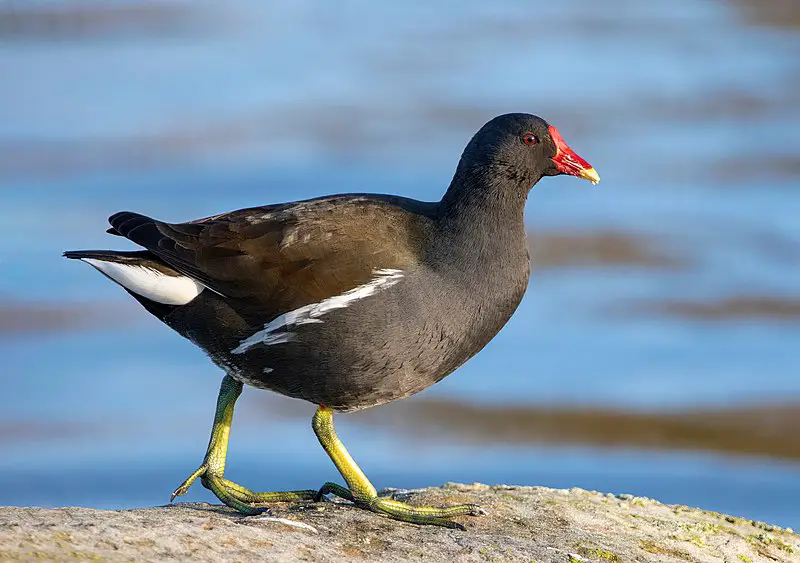
The common moorhen, also called waterhen or swamp chicken, belongs to the rail family and is widespread across various regions of the Old World.
These birds prefer to inhabit wetlands like canals, marshes, and ponds with rich vegetation. They are not found in polar regions or some tropical rainforests.
The species is known for its distinctive red forehead shield, which becomes more prominent during breeding season. Common moorhens usually feed on aquatic plants, small fishes, and invertebrates.
They are excellent swimmers and divers, but are also able to walk on floating vegetation. When threatened, they can flee by diving and swimming underwater.
Overall, common moorhens are fascinating birds that add to the diversity of wetland ecosystems.Scientific classification:
| Kingdom | Animalia |
| Phylum | Chordata |
| Class | Aves |
| Order | Gruiformes |
| Family | Rallidae |
| Genus | Gallinula |
| Species | G. chloropus |
Also Featured In: Water Birds Live around Us, Birds of Kauai, Hawaii
13. Square-Tailed Drongo-Cuckoo
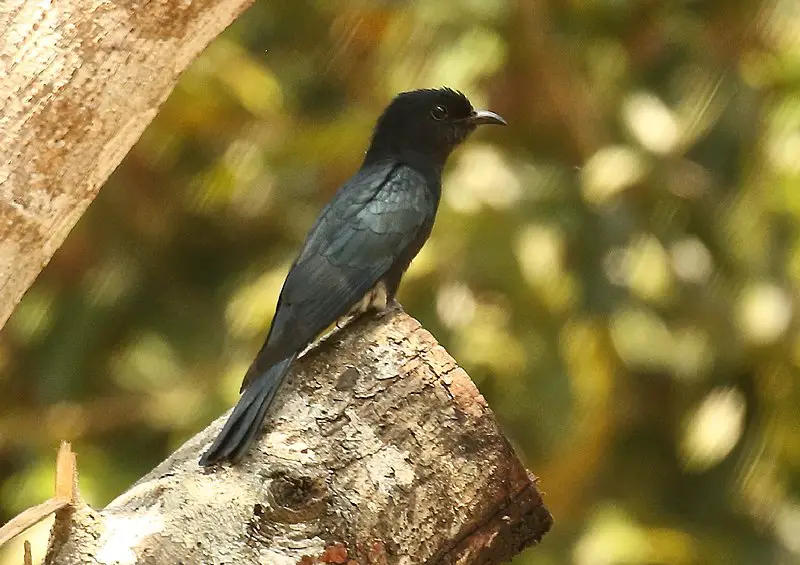
The square-tailed drongo-cuckoo bird is a type of cuckoo that bears resemblance to a black drongo. It can be found in the Himalayas, extending to Southeast Asia.
This bird was previously thought to include another subspecies, which is now considered a separate species, the fork-tailed drongo-cuckoo. Its calls are distinct and sharp, consisting of a series of piercing whistles.
Despite its similarities to the black drongo, this cuckoo bird is a unique and fascinating species of its own. Its square tail sets it apart from other birds in the region.
The square-tailed drongo-cuckoo is a fascinating species for birdwatchers and scientists alike, contributing to our understanding of avian biodiversity in the region.Scientific classification:
| Kingdom | Animalia |
| Phylum | Chordata |
| Class | Aves |
| Order | Cuculiformes |
| Family | Cuculidae |
| Genus | Surniculus |
| Species | S. lugubris |
Also Featured In: Birds That Live In Siquijor,
14. Nicobar Pigeon
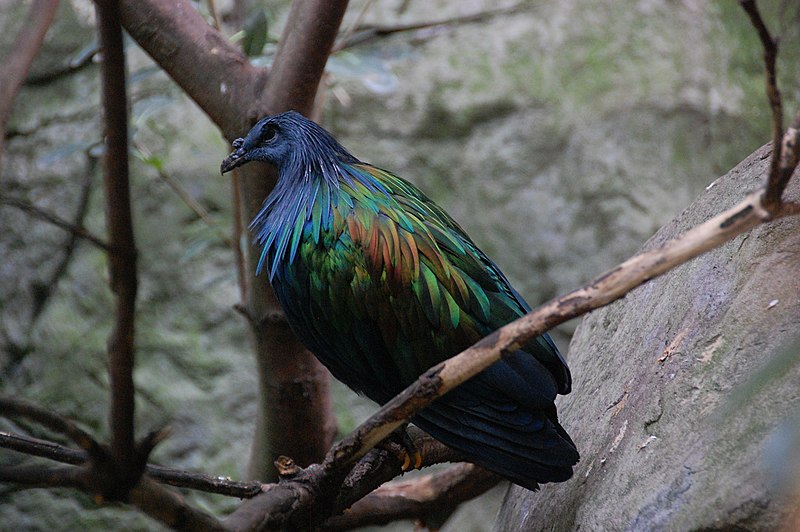
The Nicobar pigeon, also known as ma-kūö-kö to some, can be found in coastal regions and on small islands throughout the Malay Archipelago, India’s Andaman and Nicobar Islands, and even as far as Palau and the Solomons.
This bird is particularly unique, as it is the only living member of its genus, Caloenas, along with the extinct spotted green pigeon. Interestingly, it is also the closest living relative of two extinct birds: the dodo and the Rodrigues solitaire.
With its striking colors and distinctive appearance, the Nicobar pigeon is a popular bird among birdwatchers and enthusiasts alike.
In its native habitats, it can be seen foraging for food in trees, sheltering in the dense foliage of forests, or sometimes even nesting in the branches of low bushes.Scientific classification:
| Kingdom | Animalia |
| Phylum | Chordata |
| Class | Aves |
| Order | Columbiformes |
| Family | Columbidae |
| Genus | Caloenas |
| Species | C. nicobarica |
15. Oriental Darter
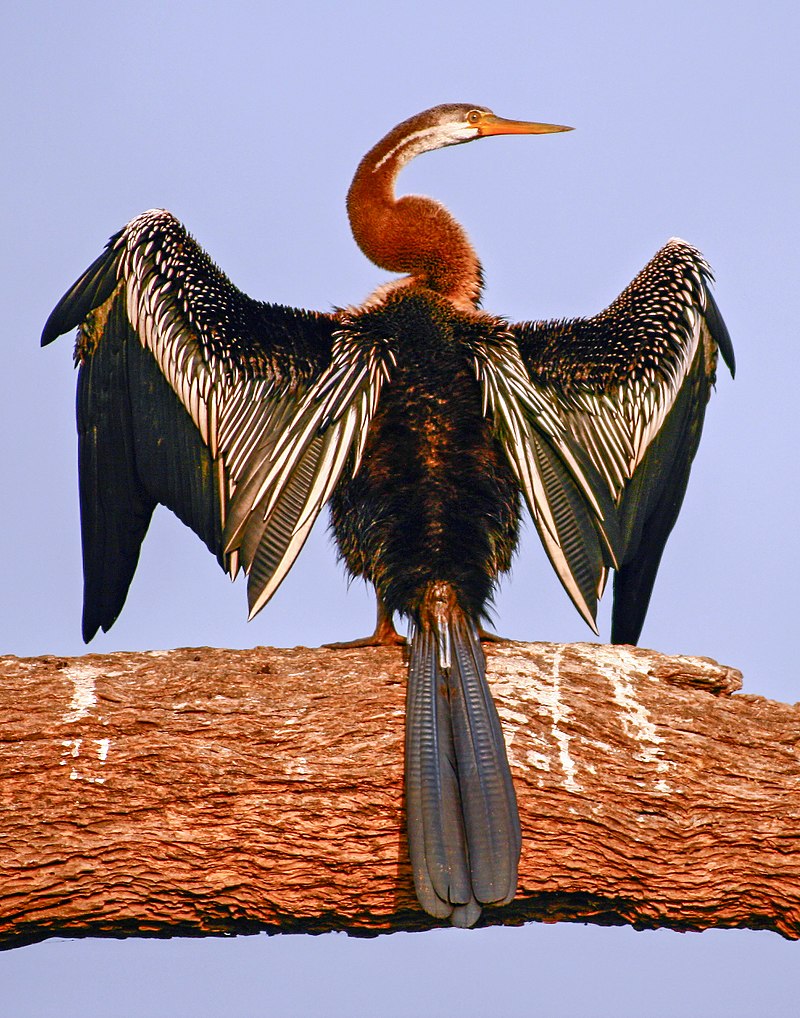
The Oriental darter is a water bird found in South and Southeast Asia. With a long and slim neck and a pointed bill, it resembles the cormorant. Like a skilled hunter, this bird dives underwater to catch fish by impaling them with its bill.
When it emerges back to the surface with a fish in its beak, it flips and tosses the fish around before devouring it headfirst.
The entire process takes place without the darter surfacing from the water. These birds show a preference for large freshwater bodies, such as lakes, swamps, and slow-moving rivers.
They have dark feathers and a distinctive chin patch. Oriental darters are skilled swimmers and have adapted to living in water.
Known for their agility and hunting skills, they are fascinating creatures to observe in their natural environment.Scientific classification:
| Kingdom | Animalia |
| Phylum | Chordata |
| Class | Aves |
| Order | Suliformes |
| Family | Anhingidae |
| Genus | Anhinga |
| Species | A. melanogaster |